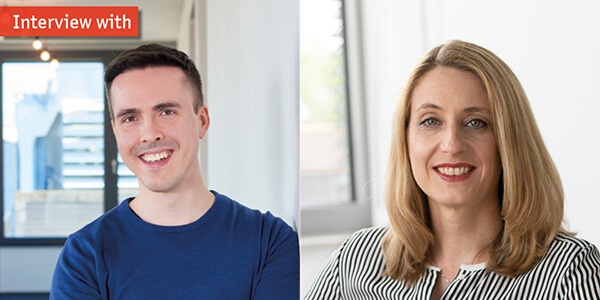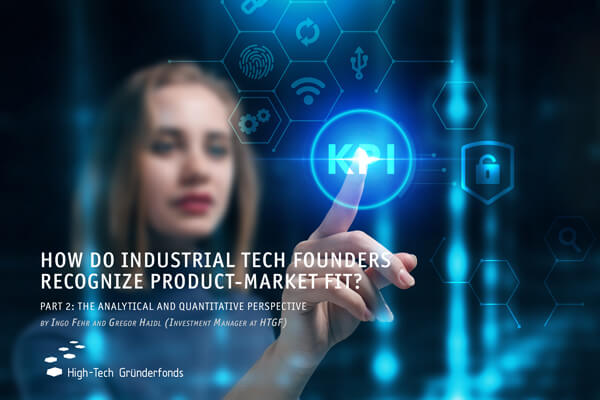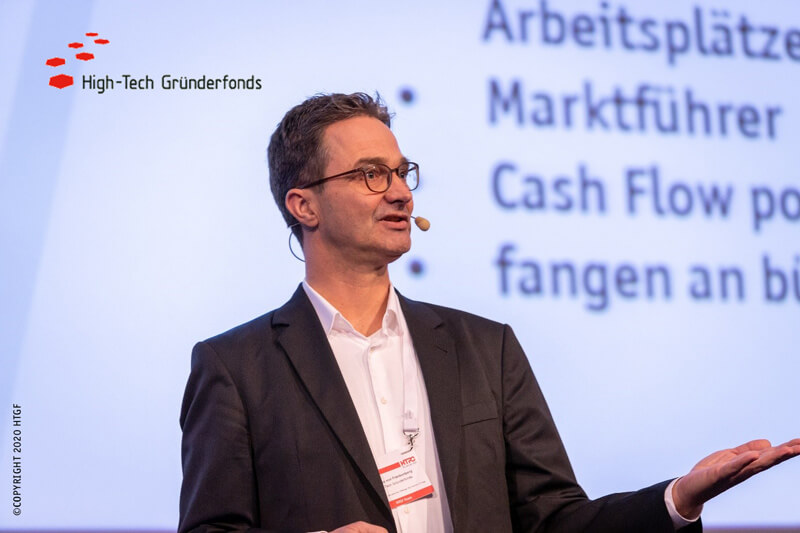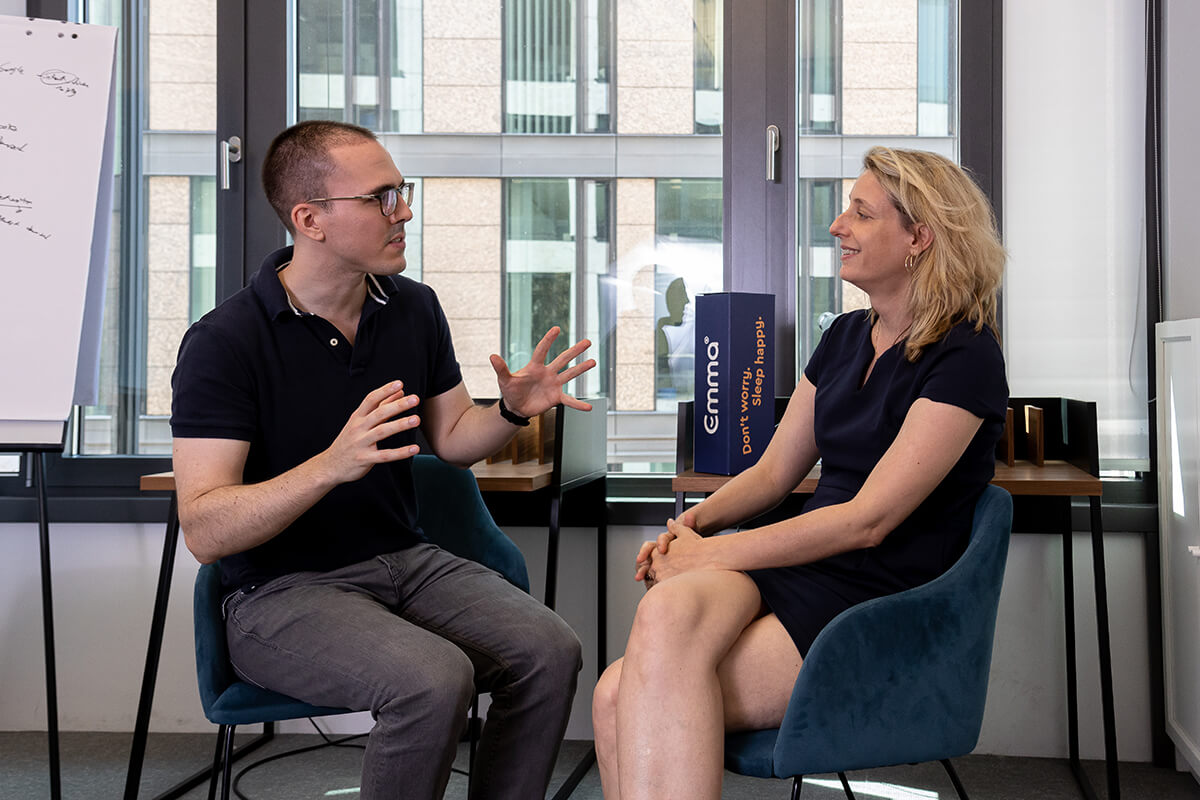Blog
A conversation about concluding an exit during the coronavirus crisis and why it’s crucial for start-ups to adopt professional standards from an early stage
Dennis Schmoltzi, Founder & CEO of Emma, and Tanja Emmerling, a partner at HTGF, talk about why it’s important to have a good network in the start-up ecosystem and about how to achieve a successful exit during a global economic crisis.
Tanja, Dennis – The topic of our discussion today is very much a success story, wouldn’t you agree?
Tanja: Absolutely – although at the start it may not have seemed that way at all. A high-tech investor investing in a mattress start-up? A
Blog
Why we need to see more investment diversity in the life sciences sector to overcome crises such as the current one
Dr. Bernd Goergen has been working at High-Tech Gründerfonds for the last 12 years. The HTGF Partner is an expert in the field of life sciences. His investment portfolio includes PEPperPRINT, a Heidelberg-based start-up which is making a valuable contribution to the fight against the coronavirus. In this interview, he sheds light on start-ups in the life sciences sector, pharmaceutical innovations and the importance of long-term investment strategies.
Bernd, how is your portfolio co
Blog
How scientists become successful entrepreneurs
Interview with Klaus Lehmann, Partner
Successful industrial technology start-ups – Klaus Lehmann has helped scientists and researchers to found successful start-ups on behalf of the High-Tech-Gründerfonds since 2014. Now the industrial technology expert has been appointed partner of the HTGF. In an interview he explains what start-ups from the world of science and academia need to bear in mind and why the HTGF is great partner for them in particular.
Robotics, lasers, sensory,
Blog
How do Industrial Tech founders recognize Product-Market Fit?
Part 2: The analytical and quantitative perspective
By Ingo Fehr and Gregor Haidl (both Investment Managers)
Supported by Yann Fiebig (Senior Investment Manager), Fabian Hogrebe (Analyst), Dr. Andreas Olmes (Principal)
“Are there any objective criteria or KPIs that can indicate that my start-up is on a good way to reach Product-Market Fit?” After dealing with the emotional perspective of founders when Product-Market Fit has been reached, this second blog post is dedicated to t
Blog
Status quo Start-up Germany?
Interview with Dr. Alex von Frankenberg
HTGF celebrates its 15th birthday in 2020. After all these years and nearly 600 investments — what, do you think, is the state of the German startup landscape today?
Germany is in pretty good shape and has caught up extremely well in many sectors. There are now more ‘Made in Germany’ startup market leaders, including some in the high-tech sector, such as Celonis, the Munich-based process mining firm, and Bank N26, one of the most successful
Blog
Startups and corporate partners: a relationship of hope and challenge
Author: Dr Martin Pfister, Senior Investment Manager
According to a recently published study by Wayra, the accelerator programme set up by the Spanish telecommunications operator Telefónica, major corporations founded 264 new venture capital businesses in 2018. It is interesting to note that this type of support for innovative, non-corporate projects has experienced a new boom since the 2008 financial crisis. Moreover, more and more companies are setting up accelerators, which assist externa
Blog
The product needs a product manager
Author: Martin Möllmann, HTGF Investment Manager
Especially at the beginning of a company’s history, resources are extremely scarce. Everybody helps out everywhere. This situation is no different in product development. While established companies can fall back on an entire structure of product managers, designers and developers, this is rarely the case for young start-ups. The technical component is often included, but the other tasks are distributed within the team or external experts are
Blog
Tanja and Dr Dennis Schmoltzi, the CEO of Emma – The Sleep Company (Bettzeit GmbH), discuss the right HR strategy in high-growth startups
Tanja: Hi Dennis, so we invested in your company, Emma – The Sleep Company, back in 2015. At that point, you were of course a classic seed company. Just 4 years later, you’re making an annual profit of more than EUR 100 million and you have over 250 employees. To keep things running, you need plenty of capacity for recruitment, job interviews, onboarding, training and employee support. How did you get to that point on an operative level in such a short space of time?
Denn
Blog
How do Industrial Tech founders recognize Product-Market Fit?
By Gregor Haidl (Investment Manager)
Supported by Yann Fiebig (Senior Investment Manager), Fabian Hogrebe (Analyst), Ingo Fehr (Investment Manager), Dr. Andreas Olmes (Partner)
Part 1: The emotional perspective
„Have I found Product-Market Fit?“ This question is particularly difficult to answer for first-time founders in early-stage start-ups. The answer has far-reaching consequences: If I don't have Product-Market Fit (yet), everything in the start-up should revolve around the search fo
Blog
Product-Market Fit in Industrial Tech – The way to customer understanding
By Ingo Fehr (Investment Manager), Gregor Haidl (Investment Manager), Fabian Hogrebe (Analyst), Yann Fiebig (Senior Investment Manager), Dr. Andreas Olmes (Partner)
The founders of Industrial Tech Start-Ups master difficult technological challenges: problems are identified, large problems are broken down into small elements and detailed analyses are performed. For most of the Start-Ups, this way of working solves the most difficult technological problems in product development: less than 10%
Blog
The Gap in the Value Chain of Funding Start-ups is Moving Forward
This is what usually happens. You take your car and go to the Mediterranean for your holidays. You prepare everything but you don’t think about the fuel your car needs to reach your destination. Although it’s clear that your car needs additional fuel on the way, you are sure to find many stations on your journey offering enough petrol to go as far as you want.
Capital is the fuel start-ups need. However, at the time you found a growth-oriented one, you are aware that you will need further f
Blog
Product-Market Fit: The Main Reason for Failure of Industrial Tech Startups within the HTGF Portfolio
A post-mortem Analysis of the HTGF Industrial Technologies Portfolio
By Gregor Haidl (Investment Manager), Fabian Hogrebe (Analyst), Ingo Fehr (Investment Manager), Yann Fiebig (Senior Investment Manager), Dr. Andreas Olmes (Partner)
Every year we read through hundreds of pitch decks or business plans at High-Tech Gründerfonds (HTGF) created by technology startups in the industrial environment. In recent years, we have repeatedly experienced the reasons that determine the success or failure of







